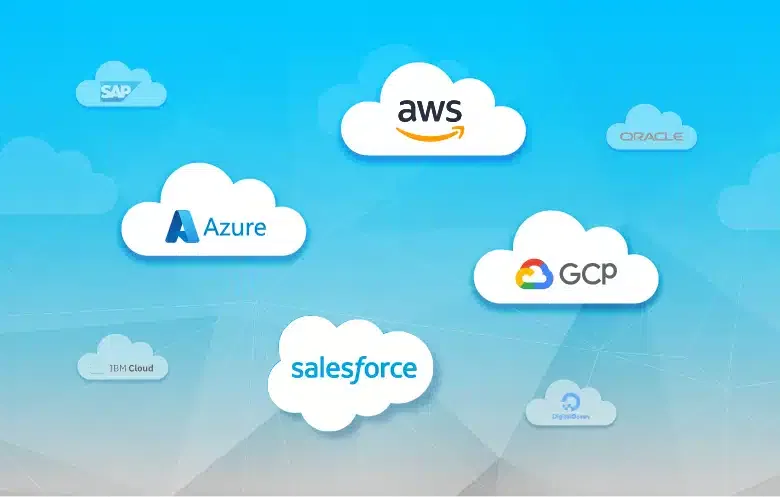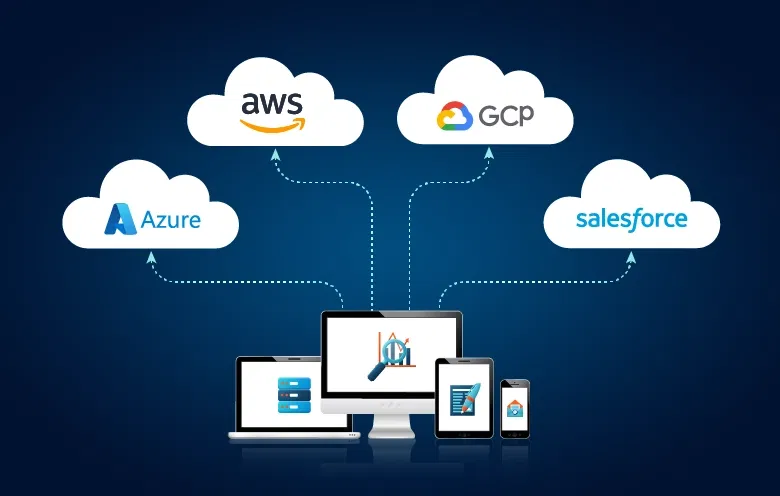Cloud computing has become the bedrock of modern businesses. The ability to store, manage, and access data and applications remotely has revolutionized the way organizations operate. However, the journey to migration of an organization’s digital assets, applications, data, and workloads from conventional on-premises infrastructure to cloud-based platforms isn’t always straightforward.
Cloud migration involves meticulous planning, resource allocation, and implementation strategies. This is where automation plays a pivotal role in accelerating the process.
Gartner predicts 60% of data center infrastructure teams will have relevant automation and cloud skills by 2027
In this blog we will explore the profound implications of automation in accelerating the rapid migration to cloud infrastructure.
Benefits of automated cloud migration
Due to the rising complexities in the migration process, leveraging automation becomes paramount. By integrating automated tools and methodologies, organizations can streamline their migration projects, achieving faster, more accurate, and reliable outcomes. Here are some key benefits:
1. Efficiency improvements
Automation streamlines tasks, optimizing processes and resource utilization for faster completion during cloud migration. By eliminating manual intervention, organizations can achieve greater efficiency and reduce the time required for migration.
2. Cost savings
One of the significant advantages of automation in cloud migration is the reduction of operational costs. By minimizing manual intervention and enhancing resource efficiency, organizations can achieve cost savings throughout the migration process.
3. Reduction in manual errors
Human errors can have significant consequences during cloud migration, leading to data loss or application failures. Automation reduces the likelihood of manual errors, ensuring the secure and accurate transfer of data and applications to the cloud environment.
4. Accelerated deployment cycles
Automated procedures expedite the deployment of applications and resources, significantly reducing deployment time. This allows organizations to take advantage of the scalability and flexibility offered by the cloud, enabling faster time-to-market for new products and services.
5. Scalability and flexibility
Automation enables easy scaling and swift adaptation to changing needs during cloud migration. Organizations can effortlessly adjust their resources and infrastructure to accommodate growth and changing requirements, ensuring a seamless transition to the cloud.
Tools and technologies for automating cloud migration processes
Several tools and technologies can facilitate the automation of cloud migration processes. Here are some popular ones:
1. Infrastructure as Code (IaC) tools
Infrastructure as Code (IaC) tools enable organizations to automate infrastructure provisioning and configuration management. Some widely used IaC tools include:
- Terraform: Empowers infrastructure automation through declarative configuration files.
- AWS CloudFormation: Simplifies the provisioning of AWS resources using templates.
- Azure Resource Manager: Offers templates for resource deployment in Azure.
2. Data migration tools
Data migration is a critical aspect of cloud migration, and several tools are available to facilitate seamless data transfer. Some commonly used data migration tools include:
- AWS Database Migration Service: Facilitates the migration of databases to AWS with minimal downtime.
- Azure Database Migration Service: Enables organizations to migrate databases to Azure with ease.
- Google Cloud Data Transfer Service: Streamlines the process of transferring data to Google Cloud.
3. CI/CD tools
Continuous integration and continuous deployment (CI/CD) tools automate the software development process, allowing for efficient application deployment and management. Here are some popular CI/CD tools:
- Jenkins: An open-source automation server for continuous integration and delivery.
- GitLab CI/CD: Provides a robust platform for the entire DevOps lifecycle.
- CircleCI: Offers cloud-based CI/CD for automating the software development process.
Key areas for automation in cloud migration
1. Resource provisioning and configuration
Automating resource provisioning and configuration management is crucial for optimizing cloud migration. By implementing automated procedures, organizations can ensure efficient resource utilization and streamlined configurations.
2. Data migration and transfer
Smooth data migration and synchronization are vital for a successful cloud migration strategy. Automated tools facilitate secure and accurate data transfer, ensuring that vital data is seamlessly moved to the cloud environment.
3. Application deployment and management
Efficient application deployment and management are essential for leveraging the benefits of the cloud. By integrating CI/CD pipelines and containerization tools, organizations can automate application deployment, accelerating deployment cycles and ensuring effective management in the cloud.
Best practices for implementing automation in cloud migration
1. Assessment and planning
- Evaluate the current state of infrastructure, applications, dependencies, and interconnections.
- Clearly define objectives and expected outcomes from the migration.
- Utilize automated assessment tools to identify workloads suitable for migration.
- Select the right automation tools and frameworks based on compatibility and requirements.
2. Standardization and templates
- Standardize configurations by creating templates and standard configurations.
- Develop reusable automation scripts or playbooks for consistent deployment across different environments.
3. Security and compliance
- Implement automated security checks and configurations to ensure compliance adherence.
- Utilize identity and access management automation for secure resource access.
4. Testing and validation
- Implement automated testing for applications to ensure they function properly in the cloud environment.
- Develop validation procedures and automated tests to confirm successful migrations.
5. Incremental migration and monitoring
- Break down the migration into smaller, manageable chunks to reduce risks and enable iterative improvements.
- Implement automated monitoring tools to track performance, detect issues, and optimize resource usage post-migration.
How to identify if automated cloud migration works for your business?
Discovering if automated cloud migration suits your business involves diving into crucial factors. It’s like finding the perfect puzzle piece that fits seamlessly. To unravel this puzzle, peek into your business’s needs, goals, and capabilities, consider the following factors:
- Assess your business objectives and evaluate how automation can support them.
- Evaluate the complexity and scale of your migration project and determine if automation can streamline the process.
- Conduct a risk assessment to identify potential challenges and determine if automation can mitigate them.
- Consider the time-to-value and speed of deployment that automation can offer.
- Assess the scalability and flexibility that automation can provide to accommodate your business’s future growth.
- Evaluate the compatibility of your applications with automation tools and frameworks.
- Consider conducting pilot projects or proof of concepts to test the feasibility and effectiveness of automated cloud migration for your business.
Embrace automated cloud migration for hassle-free transformation
Adopting automation isn’t merely an enhancement but a necessity in modernizing infrastructure. It empowers businesses to concentrate on innovation, secure in the knowledge that the foundation of their operations is well-optimized and future-ready.
Are you looking to seamlessly transition your operations to the cloud? Our automated cloud migration consulting services are designed to simplify and expedite the migration process for your business. With our expertise in cloud consulting services, we ensure a smooth transition, optimizing efficiency and minimize disruptions. Excited to tap into the perks of automated cloud migration? Let’s make your transformation effortless starting today.



